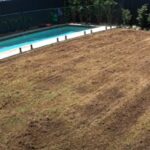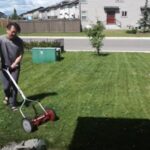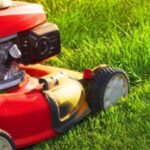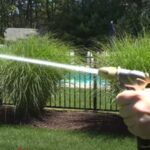Is dethatching necessary for your lawn? If you’ve noticed patches of unhealthy grass, water pooling, or a lawn that just doesn’t seem to thrive no matter what you do, the problem might be hidden beneath the surface—in a thick layer of thatch.
This buildup of dead grass and roots can block essential nutrients, water, and air from reaching your lawn’s roots, leaving your grass vulnerable and weak. But before you grab that dethatching rake or machine, it’s important to understand when dethatching truly benefits your lawn and when it could actually do more harm than good.
You’ll discover how to check your lawn’s thatch layer, why dethatching might be the key to a healthier yard, and the best times to take action. Read on to learn whether dethatching is really necessary for your lawn’s health and beauty.
You May Like
- High-Powered Performance: Equipped with a 12-amp motor, this versatile…
- Customizable Depth Control: Adjust the 5-position height settings to tailor…
- Enhanced Aeration for Lush Growth: The scarifier function cuts into grass…
- Air Boost Technology for Maximum Pickup: Durable spring steel tines…
- [Powerful 13 Amp Electric Motor]:Equipped with a 13 Amp copper motor, this…
- [13-Inch Rake Path with Adjustable Depth]:With a 13-inch wide rake path and…
- [Quick-Switch 2-in-1 Blades]:Use the dethatcher to clear thatch and moss or…
- [Large 30L Collection Bag for Efficient Lawn Maintenance]:A large 30L…
- 2-IN-1 DESIGN: Choose between two attachments with 3,700 RPM* of power and…
- CUSTOMIZE YOUR PROJECT: Effortlessly remove layers of matted build up with…
- HEALTHY LAWN GROWTH: Remove dead grass, moss, thatch, & more in early…
- EASY MAINTENANCE: Features a 14-inch cutting width and 6.7-inch front…
- 5-position height adjustment ranges from a +1/4 to -1/2-inch raking depth
- Powerful 13-amp electric motor generates up to 3300 RPM with a 15-inch…
- 16-blade scarifying head helps aerate your grass for a healthier and…
- Dethatching head features 24 steel tines for maximum thatch pickup,…
- [Powerful Electric Motor]:Equipped with a copper motor, this electric…
- [15-Inch Rake Path with Adjustable Depth]:With a 15-inch wide rake path and…
- [Quick-Switch 2-in-1 Blades]:Use the dethatcher to clear thatch and moss or…
- [Large 45L Collection Bag for Efficient Lawn Maintenance]:A large 45L…
Thatch And Lawn Health
Thatch is a layer of dead grass, roots, and debris. It forms between the soil and the green grass blades. A thin layer of thatch helps protect the lawn. But too much thatch can cause problems.
Excessive thatch stops water, air, and nutrients from reaching grass roots. This makes the lawn weak and unhealthy. Grass roots may get trapped and die from heat or drought. Also, thick thatch holds water which can suffocate roots.
Too much thatch can lead to disease and attract pests. Lawn diseases grow well in thick thatch. Insects also find shelter there. This harms the grass and makes the lawn look bad.
Signs Your Lawn Needs Dethatching
To check the thatch layer, dig a small patch of lawn. Measure the layer of dead grass, roots, and debris between soil and green grass. If this layer is more than half an inch thick, dethatching is needed.
Common lawn symptoms show when thatch is too thick. Grass may look yellow or brown even with watering. Water may pool on the surface, not soaking in. The soil can feel hard and dry underneath. Grass roots get trapped, causing stress and poor growth.
Thick thatch blocks air, water, and nutrients from reaching roots. It can also cause lawn diseases and invite pests. Removing thatch helps the lawn breathe and grow better.
When To Avoid Dethatching
New or recently seeded lawns need gentle care. Removing thatch can damage young grass roots. It is best to wait until the grass is strong and grown.
Stressed or dormant lawns should not be dethatched. Lawns under stress need rest to recover. Dethatching now can cause more harm than good.
A thin thatch layer is usually not a problem. If the layer is less than half an inch, it does not block water or nutrients. Avoid dethatching in this case to keep your lawn safe.

Credit: www.gardenmyths.com
Benefits Of Dethatching
Dethatching helps water and nutrients reach the grass roots better. Thatch is a layer of dead grass that blocks these essentials. Removing it allows the soil to absorb water deeply and feed the lawn well. This improves the lawn’s health and growth.
Seeds also grow better after dethatching. The soil is more open, letting seeds touch the ground directly. This helps seeds sprout faster and grow strong. It is very important for planting new grass.
The lawn looks greener and fresher after dethatching. Grass blades stand up straighter without thick thatch. This makes the lawn appear neat and full of life.
Lawns recover faster after dethatching during active growth times. Grass can heal from the process quickly and grow thicker. This helps keep the lawn healthy all season long.
Dethatching Methods
Manual dethatching uses hand tools like rakes. It is cheap and good for small lawns. You pull out the thatch slowly. It takes more time and effort.
Mechanical dethatching uses machines like power rakes. It works faster and covers large areas. Machines dig deep and clear thick thatch easily. But they cost more and need care.
| Step | Action | Tip |
|---|---|---|
| 1 | Cut grass short | Make it easier to remove thatch |
| 2 | Use manual or mechanical dethatcher | Choose based on lawn size and budget |
| 3 | Rake up loosened thatch | Remove debris to prevent lawn disease |
| 4 | Water lawn lightly | Help grass recover after dethatching |
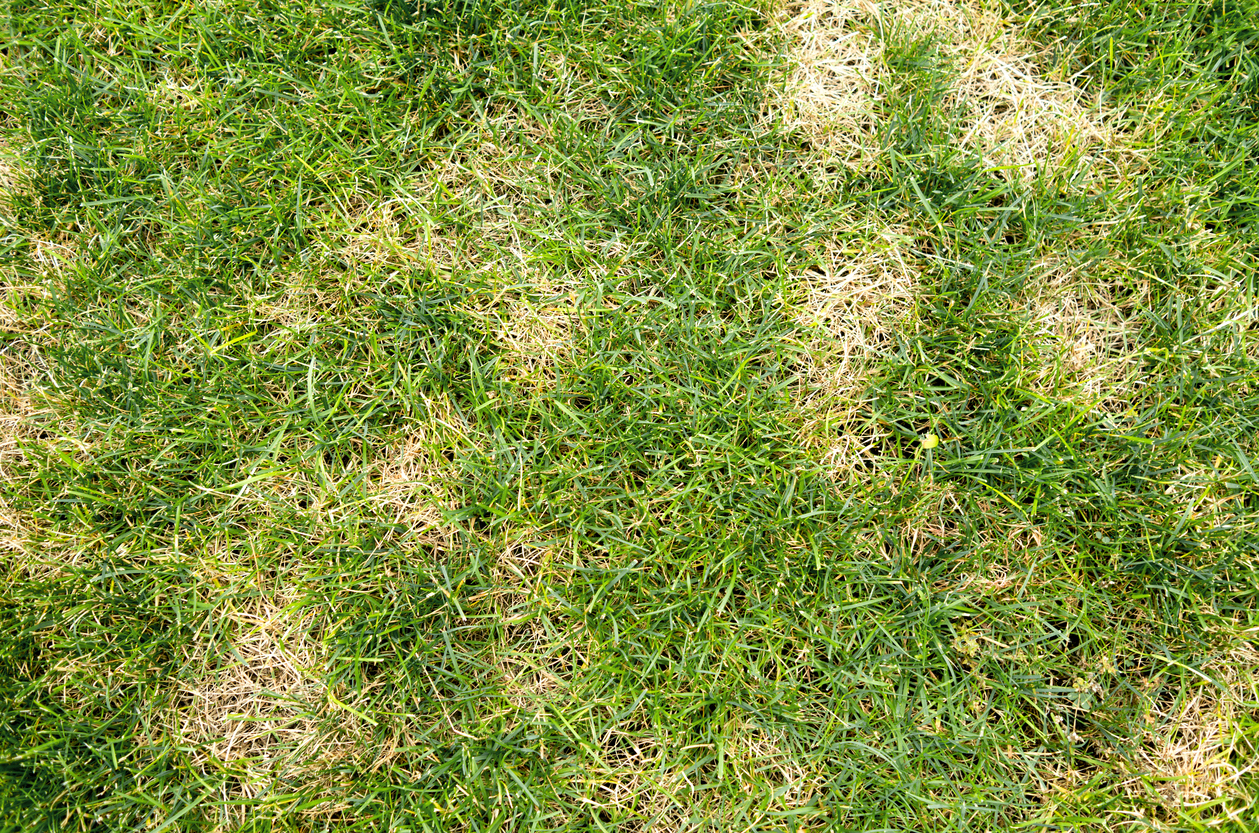
Credit: ambrosiolandscapes.com
Post-dethatching Lawn Care
After dethatching, watering your lawn is very important. Keep the soil moist, but do not flood it. Watering helps the grass recover and grow strong.
Use a balanced fertilizer to give your lawn the nutrients it needs. Fertilize about one week after dethatching for best results.
Overseeding is a good idea after dethatching. It helps fill bare spots and thickens your lawn. Spread seed evenly and press it lightly into the soil.
Aeration can be done after dethatching too. It improves air, water, and nutrient flow to the roots. This helps your lawn grow healthier and stronger.
| Task | Timing | Purpose |
|---|---|---|
| Watering | Immediately after dethatching and regularly | Keep soil moist for grass recovery |
| Fertilizing | About 1 week after dethatching | Provide nutrients for strong growth |
| Overseeding | Right after dethatching | Fill bare spots and thicken lawn |
| Aeration | After dethatching or during growing season | Improve soil air and nutrient flow |
The best timing for dethatching is during the lawn’s active growth period. This is usually in spring or early fall. The grass can heal faster and fill in the bare areas.
Natural Alternatives To Dethatching
Earthworms play a vital role in keeping soil healthy and loose. Their movement helps break down old grass and organic matter naturally. This process reduces the need for mechanical dethatching. Encouraging earthworms means less buildup of thatch and better water flow into the soil.
To invite earthworms, keep your lawn moist but not waterlogged. Avoid using harsh chemicals that can harm them. Adding organic compost also gives earthworms food to thrive. This simple practice supports a healthy lawn ecosystem.
Regular lawn maintenance like mowing at the right height and watering deeply supports natural thatch breakdown. Cutting grass too short stresses roots and slows natural decomposition. Proper care reduces thick thatch layers and keeps your lawn greener and healthier without extra work.

Credit: www.pennington.com
Frequently Asked Questions
What Happens If You Don’t Dethatch Your Lawn?
Not dethatching allows thick thatch to block water, air, and nutrients from reaching roots. This causes poor growth, stress, and disease. Roots may suffocate, and pests thrive, weakening the lawn’s health and appearance over time.
Is Dethatching Your Lawn Worth It?
Dethatching your lawn is worth it if the thatch layer exceeds half an inch. It improves water, air, and nutrient penetration, promoting healthier grass growth. Avoid dethatching new, thin, or stressed lawns to prevent damage and allow natural thatch breakdown.
How To Tell If A Lawn Needs Dethatching?
Check your lawn by digging a small wedge of grass and soil. If the thatch layer exceeds half an inch, dethatching is needed. Thick thatch blocks water, air, and nutrients, causing poor grass health. Remove excess thatch to improve lawn vitality and growth.
What Is An Alternative To Dethatching?
Aeration serves as an effective alternative to dethatching. It improves soil airflow and nutrient absorption without removing thatch. Regular mowing and proper watering also help reduce thatch buildup naturally. These methods promote a healthier lawn by enhancing root growth and soil conditions.
Conclusion
Dethatching can improve your lawn’s health by removing thick layers. It helps water, air, and nutrients reach grass roots better. Without dethatching, lawns may suffer from disease and poor growth. But avoid dethatching new or thin lawns, and never do it during stress.
Timing matters—do it when grass grows actively for quick recovery. Assess your lawn’s condition before deciding. Proper care keeps your grass green and strong. Simple steps make a big difference in lawn health. Choose dethatching wisely for a vibrant, healthy yard.






